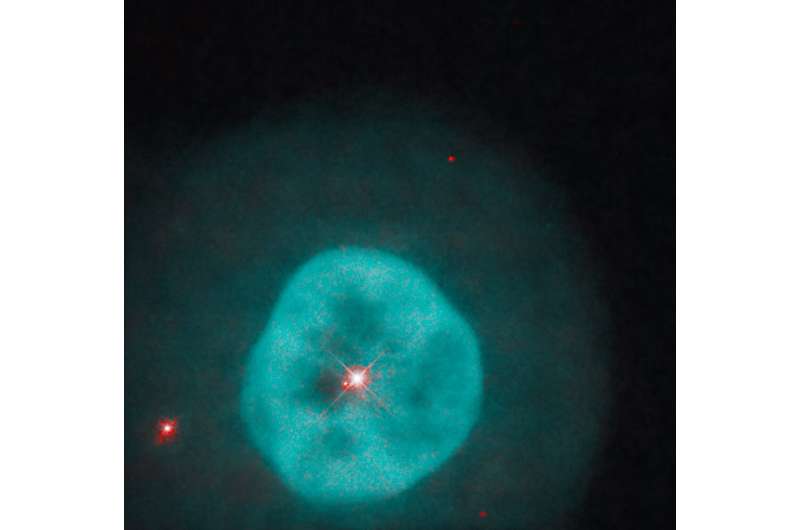Image: Hubble spies eye in the sky

Cleopatra's Eye, or NGC 1535, is a planetary nebula in the constellation Eridanus. This nebula has an unusual structure that is similar to the better-known NGC 2392, with an outer region and a brighter inner center.
A planetary nebula forms when a star approximately the size of our Sun dies, exhaling its outer layers into space as the core turns into a white dwarf star. Through early telescopes these objects resembled planets—giving them their name—but planetary nebulae are unrelated to actual planets.
Hubble observed this nebula as part of a study of over 100 planetary nebulae with nearby stars. The proximity of the stars indicated a possible gravitational connection between the nearby stars and the central stars of the nebulae. Observations of the distance between NGC 1535's central star and its possible companion suggest that Cleopatra's Eye is indeed part of a gravitationally bound binary star system.
Provided by NASA's Goddard Space Flight Center





















